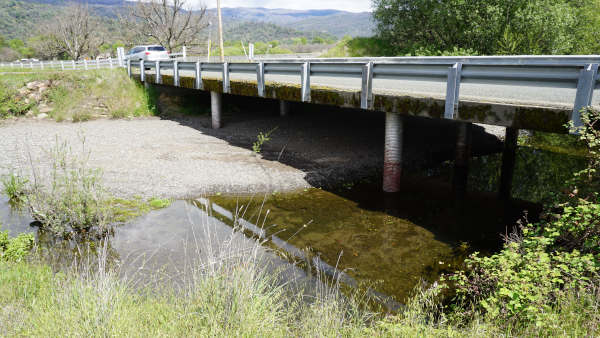
LAKE COUNTY, Calif. — The Board of Supervisors on Tuesday approved the award of a contract to an engineering firm that will be tasked with designing a project to remove gravel and sediment buildup from the levee channels that protect the town of Upper Lake.
Water Resources Director Scott De Leon asked for, and received, the approval of the supervisors — sitting as the Lake County Watershed Protection District Board of Directors — to waive the county’s formal bidding process and authorize the signing of an agreement with Peterson Brustad Inc. for engineering design services for the Clover Creek Bypass Gravel Removal Project.
The Folsom-based company will be paid $44,820 for the project. The contract term ends on March 31, 2023.
Peterson Brustad was the firm hired to complete the Middle Creek Flood Control Feasibility Study, which covers the Middle Creek and Clover Creek diversion levees, the diversion structure and Old Clover Creek closure structure in Flood Zone 8. That work is still underway.
Those levees do not provide protection in 100 year flood events, and modeling completed last year and described in a video on the feasibility study showed that if the levees failed it could be catastrophic for Upper Lake, as Lake County News has reported.
The Western Region Town Hall hosted a special workshop on the levees last week.
De Leon said the contract is to prepare preliminary plans not only for the Clover Creek bypass but all of the Clover Creek and Ally Creek facility in Upper Lake.
The United States Army Corps of Engineers installed the levees on those creeks in the 1950s, De Leon said.
Now, there is “significant gravel buildup within the channels” and De Leon said one of the projects that’s been identified to deal with the levees condition is gravel removal.
However, in order to pursue that project, De Leon said his department needs to have preliminary plans to develop the project scope — including how many yards of material need to come out. They also need to start preliminary environmental work.
“That is all key to making applications for funding,” he said.
He added, “It’s going to be a very expensive project so we need as much information as we can,”
De Leon proposed to use Peterson Brustad because the company already is doing the feasibility study of that entire creek region, has been analyzing the levees and modeling how the levees perform under certain storm events and conditions. As a result, they have all of the topographic information on the channels.
There are potential funding sources available to pay for the extraction project, said De Leon; those include the Natural Resources Conservation Service, part of the U.S. Department of Agriculture.
That option was discussed during the June 15 Western Region Town Hall attended by Lake County News. An NRCS representative, Jim Rienstra, who attended that meeting via Zoom confirmed the agency could fund the work through its programs.
“The sooner that we can get some plans done and get a project description prepared, the sooner that we can start chasing grant funds to try to do the project,” said De Leon.
“We also believe that it’s going to require a pretty significant environmental review,” he added.
Supervisor Bruno Sabatier said he didn’t necessarily agree that, under the justifications for waiving the bidding process, that it was a unique service, but that it was more of an amendment to the current contract with Peterson Brustad.
Sabatier said it also wasn’t an emergency yet, but there was the potential for one if the county gets a large amount of rain.
County Counsel Anita Grant said she thought Sabatier was right about the exemption from competitive bidding, and suggested instead that the applicable exemption would be no economic benefit.
Supervisor Moke Simon said the county needs to look at gravel removal in all local creeks, as it’s building up everywhere and affects everyone.
“Getting some of this gravel out of our creeks is very important,” he said.
Referring to Simon’s statement, Sabatier agreed that it’s a larger issue and asked if the same California Environmental Quality Act process being used for Upper Lake’s levees can be used to address future removal of gravel in the area.
“That’s a really complicated question,” said De Leon. “It’s possible.”
He said he didn’t think the environmental work can be reused, but the plan can be.
In the feasibility study, Peterson Brustad discussed the addition of structures or areas where gravel would accumulate as opposed to it going in and disrupting the channel, he explained.
De Leon said there are a number of design options that could be put into play here that could be reused. A routine maintenance project also could be done.
Sabatier moved to approve waiving the bidding process and authorizing the signing of the contract, which the board approved 4-0.
Editor’s note: This article has been clarified regarding Supervisor Sabatier’s questions about whether the California Environmental Quality Act process could be reused again.
Email Elizabeth Larson at

 How to resolve AdBlock issue?
How to resolve AdBlock issue? 



